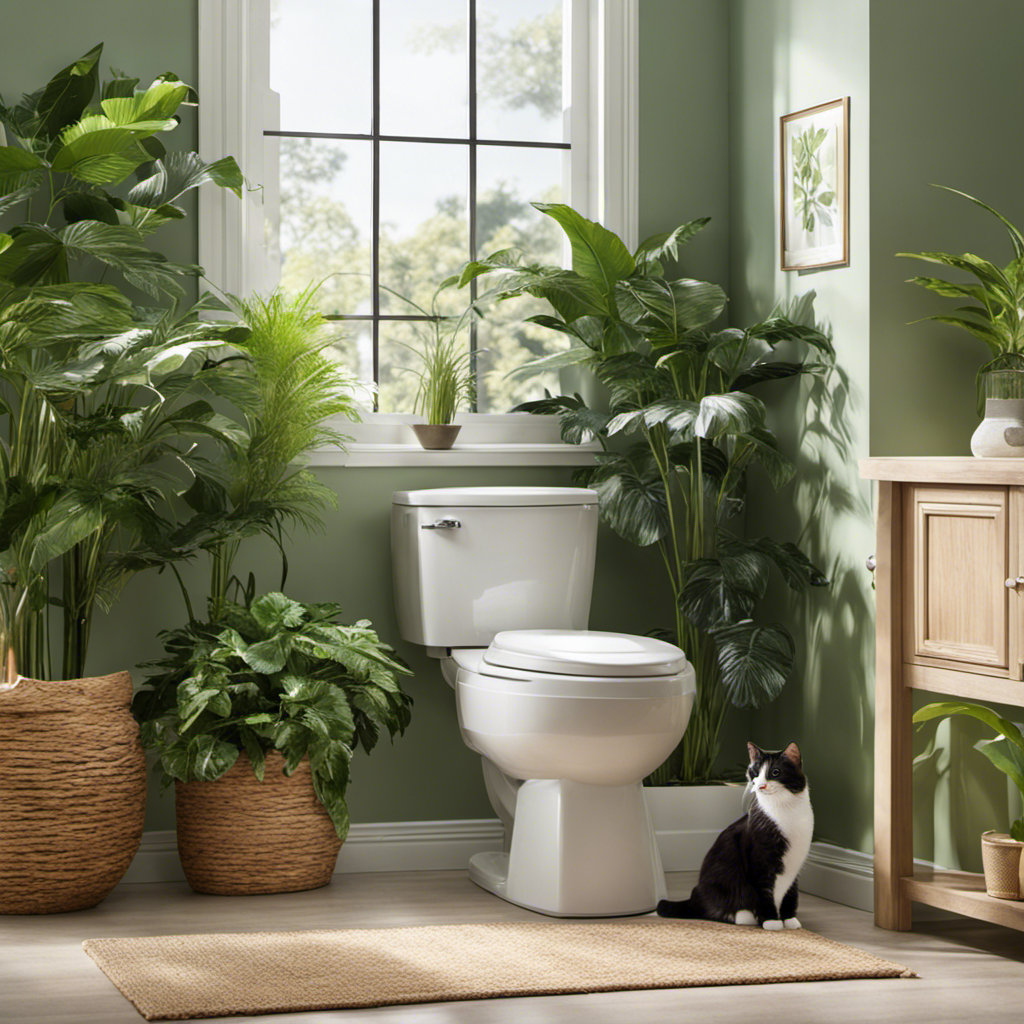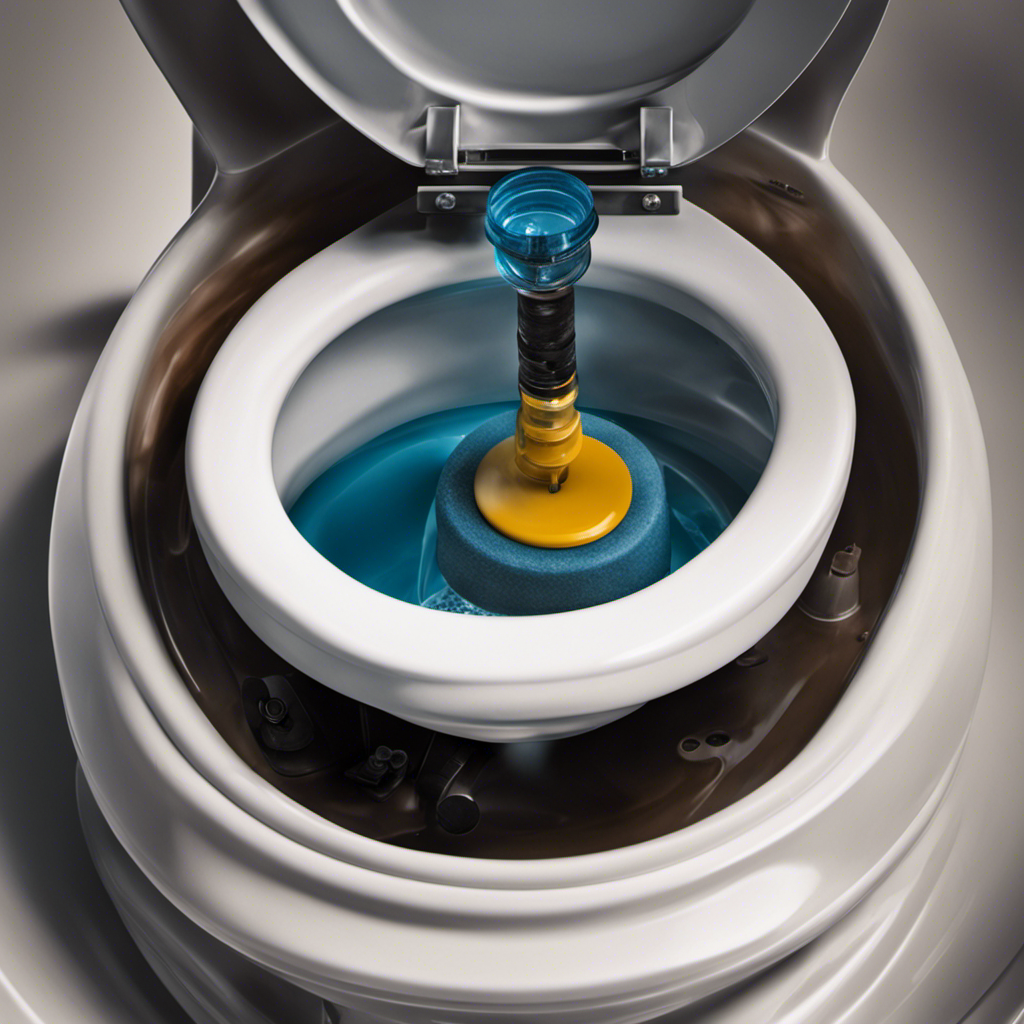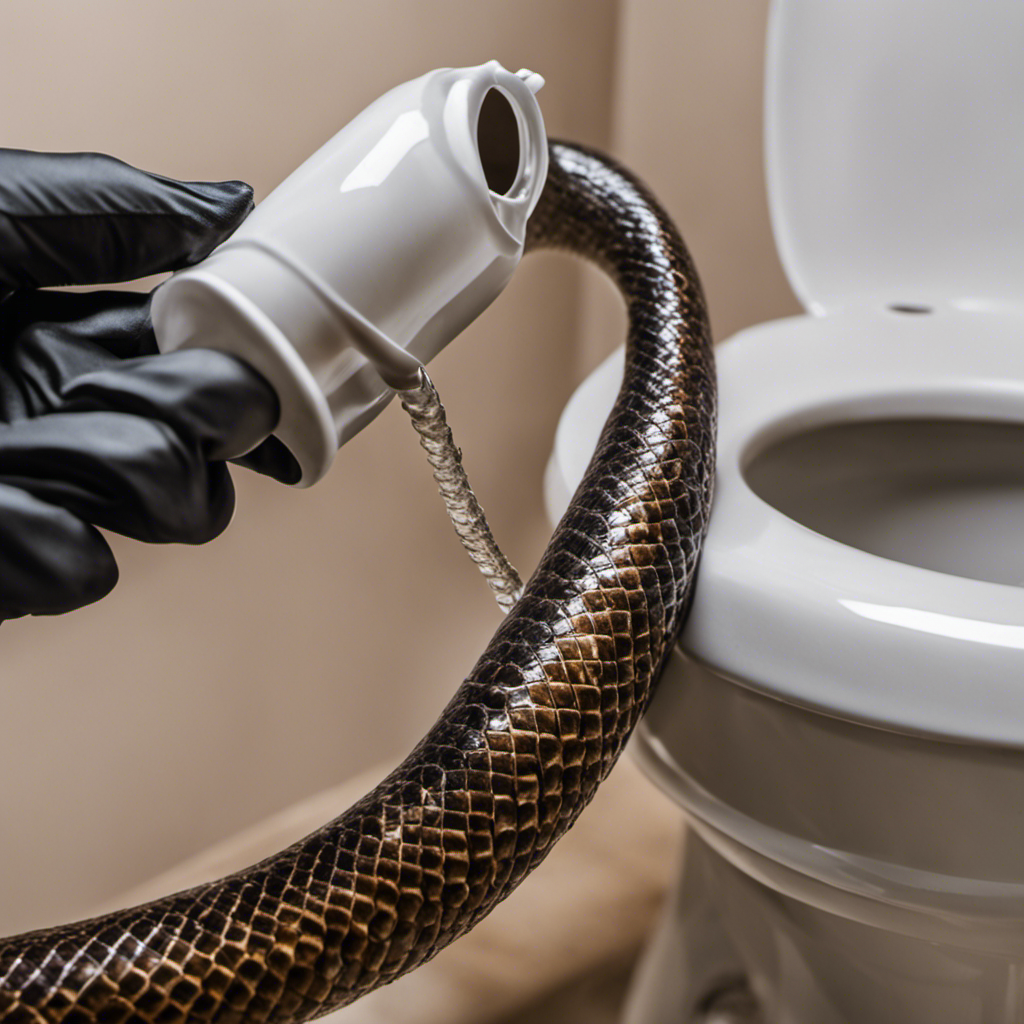I’ve got some purr-fectly useful tips for you on how to toilet train cats.
It’s a process that requires patience and consistency, but with the right approach, you can say goodbye to messy litter boxes forever.
In this article, I’ll guide you through choosing the right method, preparing your cat, and transitioning them from the litter box to the toilet seat.
We’ll also tackle common challenges and share tips for maintaining a successful toilet trained cat.
Let’s get started!
Key Takeaways
- Choosing the right toilet training method is important to ensure success.
- Consistency in the training routine and providing positive reinforcement are crucial.
- Gradually introducing the concept and transitioning from a litter box to the toilet is necessary.
- Troubleshooting common challenges, being patient, and addressing setbacks promptly are essential for successful toilet training.
Choosing the Right Toilet Training Method
When it comes to toilet training cats, it’s important to choose the right method. There are several toilet training techniques available, but not all of them may work for every cat.
One common mistake cat owners make is rushing the process. It’s important to be patient and gradually introduce your cat to the toilet training process.
Another common mistake is not providing enough positive reinforcement. Cats respond well to praise and rewards, so it’s important to reward them when they successfully use the toilet.
Additionally, consistency is key. Stick to a routine and ensure that the litter box is always accessible and clean.
Preparing Your Cat for Toilet Training
Before starting the process, it’s important to get your cat comfortable with the idea of using the toilet. Cats are creatures of habit, so introducing them to the concept gradually is key. Start by placing their litter box next to the toilet, then gradually raise it to the same level. This will help them associate the toilet with their usual bathroom spot. Once they are comfortable with this setup, you can start transitioning to a training seat that fits over the toilet bowl. This seat will have a hole in the center, allowing your cat to eliminate directly into the toilet. Using positive reinforcement, such as treats and praise, will encourage your cat to use the toilet consistently. It’s important to be patient and consistent throughout the process, as every cat learns at their own pace.
| Steps to Prepare Your Cat for Toilet Training | ||
|---|---|---|
| 1. Place litter box next to toilet | 2. Gradually raise litter box to toilet level | 3. Introduce training seat over toilet bowl |
| 4. Encourage cat with treats and praise | 5. Be patient and consistent with training |
Introducing the Litter Box to the Toilet
When it comes to introducing the litter box to the toilet, there are two key points to consider: litter box placement and the gradual transition process.
First, it’s important to choose a suitable location for the litter box. This should be a quiet and easily accessible area that provides privacy for your cat.
Secondly, the transition process should be done gradually to help your cat adjust to the new location. Start by placing the litter box near the toilet and gradually move it closer over time until it is next to the toilet.
Litter Box Placement
The best spot to place the litter box is in a quiet and easily accessible area.
When it comes to litter box size, it is important to choose one that is appropriate for your cat’s size. Cats should have enough space to comfortably turn around and dig in the litter. A litter box that is too small can lead to accidents outside the box.
On the other hand, a hooded litter box can provide several benefits. It helps to contain odor and prevents litter from being kicked out. The hood also provides privacy for your cat, which can make them feel more at ease while using the litter box.
Overall, the size and type of litter box you choose can greatly impact your cat’s litter habits and overall satisfaction.
Gradual Transition Process
During the gradual transition process, it’s important to slowly introduce your cat to the new litter box location. This can help minimize stress and ensure a successful transition. To make the process easier, here are some effective transitioning techniques to consider:
- Gradually move the litter box closer to the new location over a period of several days.
- Place some of the old litter from the previous box into the new one to familiarize your cat with the scent.
- Provide positive reinforcement and training rewards, such as treats or praise, when your cat uses the new litter box.
Gradually Transitioning to the Toilet Seat
As I’m transitioning to the toilet seat, I remember to gradually decrease the number of litter boxes available for my cat. This step is crucial in the process of toilet training. It helps my cat understand that using the toilet is the new norm for eliminating waste.
To aid in the transition, there are various toilet training supplies available in the market. These include specialized litter trays that fit over the toilet seat, allowing the cat to gradually get used to using the toilet.
Additionally, following a toilet training schedule is essential. This involves setting specific times for your cat to use the toilet and rewarding them with treats or praise when they successfully do so.
Troubleshooting Common Toilet Training Challenges
If you’re facing common challenges during the transition, there are a few strategies you can try to overcome them. Dealing with accidents and handling resistance are two of the most common issues that arise during toilet training.
Here are some effective strategies:
-
Consistency: Stick to a regular toilet training routine to establish a sense of consistency and familiarity for your cat.
-
Positive reinforcement: Reward your cat with treats or praise every time they use the toilet correctly, to encourage them to repeat the behavior.
-
Patience: Toilet training can take time, so it’s important to be patient and not get discouraged if there are setbacks along the way.
By implementing these strategies, you can effectively address accidents and resistance, and help your cat successfully transition to using the toilet.
Maintaining a Successful Toilet Trained Cat
Maintaining a successfully toilet-trained cat requires consistent reinforcement and patience. During the toilet training process, it is essential to reinforce positive behavior to encourage your cat to continue using the toilet. Whenever your cat successfully uses the toilet, provide verbal praise and maybe even a treat to reinforce the behavior. Positive reinforcement helps your cat associate using the toilet with a positive outcome, making them more likely to continue doing so.
However, setbacks are a common part of the toilet training process. Cats may have accidents or refuse to use the toilet altogether. When dealing with setbacks, it’s crucial to remain patient and avoid punishment. Punishment can create fear and anxiety, hindering the training progress. Instead, focus on identifying the cause of the setback and addressing it accordingly. It could be a change in the environment, a health issue, or simply needing to adjust the training method.
Conclusion
In conclusion, toilet training cats may seem like a daunting task, but with the right method and preparation, it can be achieved successfully.
Remember, patience is key during this process. Just like a marathon runner who diligently trains for a race, you and your furry friend will overcome any challenges that come your way.
So lace up your running shoes, set your goals high, and get ready to cross that finish line with a toilet trained cat by your side. You’ll be amazed at what you and your feline companion can accomplish together!










